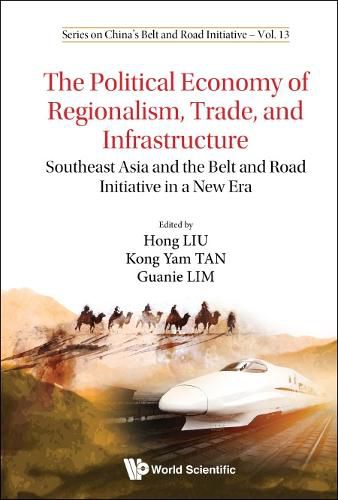Readings Newsletter
Become a Readings Member to make your shopping experience even easier.
Sign in or sign up for free!
You’re not far away from qualifying for FREE standard shipping within Australia
You’ve qualified for FREE standard shipping within Australia
The cart is loading…






This title is printed to order. This book may have been self-published. If so, we cannot guarantee the quality of the content. In the main most books will have gone through the editing process however some may not. We therefore suggest that you be aware of this before ordering this book. If in doubt check either the author or publisher’s details as we are unable to accept any returns unless they are faulty. Please contact us if you have any questions.
Since its launch in late 2013, the Belt and Road Initiative (BRI) has become a significant factor in shaping China’s economic and diplomatic relations with the world. China’s increasing clout presents opportunities as well as challenges, especially for the developing economies of the Association of Southeast Asian Nations (ASEAN) which constitute major sites for investment and trade alongside the BRI routes.This edited volume examines whether and to what extent China’s economic ascendancy has impacted the proposed ASEAN Economic Community and the respective nations in the region. It deals with this question by grounding the analysis along three themes - institutions at a regional level, industry/sector, and particular ASEAN countries’ economic relationship with China. Sixteen articles are presented to illuminate the state of affairs at the regional level and in specific ASEAN economies. They point to the importance of managing trade and investment flows stemming from China’s increasingly sophisticated national firms. This in turn hinges on forging ‘rules of the game’ at both the multilateral and bilateral levels, which potentially leads to mutually beneficial industrialization and long-term wealth creation.The Political Economy of Regionalism, Trade, and Infrastructure will be of great interest to scholars of political economy and industrial policy in East Asia, as well as to scholars and policy professionals analyzing approaches to development strategy more broadly.
$9.00 standard shipping within Australia
FREE standard shipping within Australia for orders over $100.00
Express & International shipping calculated at checkout
This title is printed to order. This book may have been self-published. If so, we cannot guarantee the quality of the content. In the main most books will have gone through the editing process however some may not. We therefore suggest that you be aware of this before ordering this book. If in doubt check either the author or publisher’s details as we are unable to accept any returns unless they are faulty. Please contact us if you have any questions.
Since its launch in late 2013, the Belt and Road Initiative (BRI) has become a significant factor in shaping China’s economic and diplomatic relations with the world. China’s increasing clout presents opportunities as well as challenges, especially for the developing economies of the Association of Southeast Asian Nations (ASEAN) which constitute major sites for investment and trade alongside the BRI routes.This edited volume examines whether and to what extent China’s economic ascendancy has impacted the proposed ASEAN Economic Community and the respective nations in the region. It deals with this question by grounding the analysis along three themes - institutions at a regional level, industry/sector, and particular ASEAN countries’ economic relationship with China. Sixteen articles are presented to illuminate the state of affairs at the regional level and in specific ASEAN economies. They point to the importance of managing trade and investment flows stemming from China’s increasingly sophisticated national firms. This in turn hinges on forging ‘rules of the game’ at both the multilateral and bilateral levels, which potentially leads to mutually beneficial industrialization and long-term wealth creation.The Political Economy of Regionalism, Trade, and Infrastructure will be of great interest to scholars of political economy and industrial policy in East Asia, as well as to scholars and policy professionals analyzing approaches to development strategy more broadly.